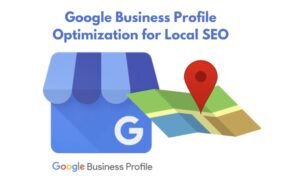As a small business owner, your website serves as a crucial first impression for many potential customers. If it’s not performing well or providing a positive experience, you could lose valuable opportunities. But don’t worry! I’m here to help you identify and avoid common mistakes that could be sabotaging your online success.
In this post, I’ll walk you through the top seven issues I see in many sites today and give you practical advice on how to fix them. Let’s get started!
1. Failing to Optimize for Mobile
More people than ever before are browsing the internet on their mobile devices. If your site isn’t mobile-friendly, you’re losing out on a huge portion of potential customers. Visitors should be able to easily navigate and read your content on smartphones and tablets.
How to Fix It:
- Use a responsive design that adapts to different screen sizes.
- Test your pages on various devices to ensure a smooth experience.
- Make sure buttons and text are large enough for mobile users to interact with.
Mobile optimization is crucial for your site’s success, and neglecting it could drive visitors away. To learn more about mobile-friendly designs, check out my guide on Responsive vs. Adaptive Design: What’s Right for Your Business?.
2. Slow Loading Speed

A slow website is one of the fastest ways to lose visitors. In a world where people expect instant results, even a small delay in load times can lead to frustration, causing users to leave before they even see your content.
How to Fix It:
- Compress large images and videos to speed up the site.
- Minimize unnecessary scripts that slow things down.
- Use caching to reduce load times.
If you’re looking to learn more about improving your website’s speed, feel free to visit my article on Website Maintenance Essentials: Keeping Your Site Updated.
3. Confusing Navigation
Visitors should be able to find what they need quickly and easily. A cluttered or confusing menu is a surefire way to frustrate users. If your visitors can’t figure out how to get from one page to another, they’ll likely leave your site.
How to Fix It:
- Keep the navigation clear and simple.
- Group similar pages together and ensure key sections are easy to find.
- Add a search bar for those who are looking for something specific.
Good navigation is a cornerstone of a strong user experience. If you’re looking for tips on building an intuitive layout, check out my post on How to Choose the Perfect Layout for Your Website.
4. Ignoring SEO Best Practices

Even if you have an amazing design, if your website isn’t optimized for search engines, you could be missing out on organic traffic. Ensuring your site is visible on search engines is essential for attracting visitors.
How to Fix It:
- Use proper heading tags (H1, H2) to structure your content.
- Add alt text to images and clean up your URL structure.
- Use relevant keywords naturally throughout your content.
Search engine optimization might seem complex, but it doesn’t have to be! To dive deeper into SEO, take a look at my post on What Is Website Design and Why Does It Matter for Your Business?.
5. Weak Calls-to-Action (CTAs)
Without effective CTAs, your visitors may not know what action to take next. Whether it’s signing up for a newsletter, making a purchase, or contacting you for more information, CTAs are essential for guiding users.
How to Fix It:
- Make your CTAs visible and easy to understand.
- Use action-oriented language like “Get Started” or “Learn More.”
- Place CTAs where visitors will naturally see them, such as at the end of blog posts or on product pages.
Strong CTAs are key to turning visitors into leads or customers. If you want to make your landing pages more effective, check out my post on Landing Pages: Designing for Maximum Conversions.
6. Lack of SSL Certificate
If your site doesn’t have an SSL certificate, it could be costing you trust and credibility. An SSL certificate encrypts data between your site and your visitors, making their information secure. Plus, it shows visitors that your site is trustworthy.
How to Fix It:
- Install an SSL certificate through your hosting provider.
- Ensure all pages, especially ones involving sensitive information, are HTTPS-secure.
A secure site is essential for building trust and protecting your visitors. For more on security features, take a look at Essential Features Every Business Website Must Have.
7. Hard-to-Find Contact Information
If visitors can’t easily find how to contact you, they might feel frustrated or doubt your professionalism. Whether for support, inquiries, or sales, your contact information should be easy to find.
How to Fix It:
- Include a Contact Us button in a visible place on your site.
- Make sure your email, phone number, and physical address (if relevant) are easily accessible.
- Consider adding a live chat option for real-time communication.
Clear contact details are crucial for building trust. If you’re improving your site’s user experience, my post on How Website Redesign Can Boost Your Business Growth has more tips on this.
A well-designed site
isn’t just about looking good; it’s about functionality and user experience. By addressing these common mistakes, you can enhance your site’s performance, improve customer satisfaction, and ultimately drive more conversions.
Take some time to review your website and implement these changes. A few simple tweaks can make a big difference in how users interact with your site, and help your business stand out online.


